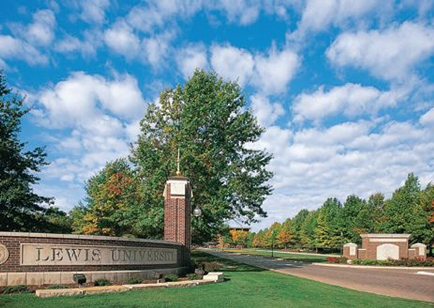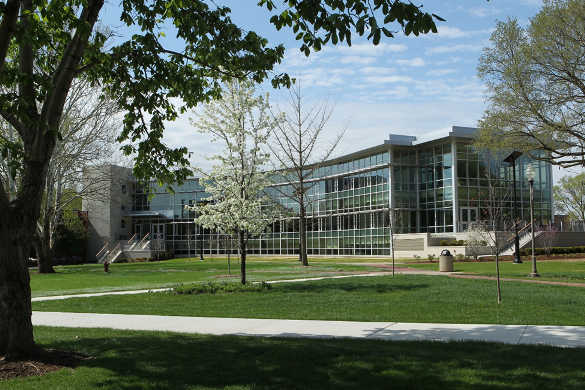|
General Information
Call for Papers
Call for Industry Presentation and Papers
Call for Student Posters
Submit a Paper
Travel & Lodging Info
Preliminary Program
Keynote Speakers
Workshops
Registration Information
Sponsorship Information
Sponsors
|
Workshops
Saturday, May 20, 2023
9:45 AM
 |
Howard Rockman
Registered Patent Attorney and Partner with Rockman, Videbeck & O'Connor
|
Howard B. Rockman is a registered patent attorney and partner with Rockman, Videbeck & O'Connor. Howard represents clients in litigation of patent, copyright, trademark and trade secret cases in Federal and State Courts, as well as clients seeking to secure domestic and foreign intellectual property rights before the U.S. Patent and Trademark Office, the U.S. Copyright Office, and similar intellectual property offices throughout the world.
Industry Experience
Howard began his legal career as a Patent Examiner at the U.S. Patent and Trademark Office before moving on to his role as an Assistant Attorney General at the U.S. Department of Justice. He worked in the Antitrust Division and Patent Litigation Sections of the Justice Department.
Teaching Positions
Adjunct Professor of Intellectual Property Law: John Marshall Law School, University of Illinois at Chicago College of Engineering, Northwestern University College of Engineering. Author of Textbook: "Intellectual Property Law for Engineers and Scientists," John Wiley & Sons (2004)
Professional Activities
- American Bar Association, Intellectual Property Law Section
- Institute of Electrical and Electronic Engineers (IEEE)
- U.S. Army Corps of Engineers and Judge Advocate General Corps 1960-1968
Education
- The George Washington University Law School, J.D. with Honors, 1963
- Drexel University, B.S. Mechanical Engineering, 1959
Bar and Court Admissions
- U.S. Patent and Trademark Office
- Supreme Court of Illinois
- Court of Appeals of Maryland
- U.S. Supreme Court
- U.S. Court of Appeals for the Federal Circuit
- U.S. Court of Appeals - Seventh Circuit
- U.S. District Court - Northern District of Illinois, Trial Bar
Tutorial: Intellectual Property and the Engineer
Intellectual Property and the Engineer
- Introduction
- Intellectual Property Basics
- Patents
- Trademarks
- Copyright
- Trade Secrets
- Scope of coverage of each IP vehicle.
- Patents
- Brief history
- Machine, article of manufacture, composition of matter, process or method, plants.
- Patentable subject matter, AI, novel and non-obvious, useful.
- Types of patents and improvements.
- Data that goes into a patent.
- Background/prior art.
- Complete description of structure and one cycle of operation.
- Claiming the invention.
- Importance of claims
- Sample claims
- Patent not a monopoly; encourages others to get around your patent and thus advance technology.
- U.S. Government right to use your invention, but they must pay you if they do.
- Patentable Subject Matter
- Useful and work for its intended purpose (utility) in Constitution.
- Novelty.
- Non-obviousness.
- Non-patentable subject matter.
- Abstract ideas, mathematical expressions
- Pure concepts
- Items found in nature, modified living organisms if novel and non-obvious. (Examples: DNA, recombinant DNA, isolated DNA, Genetic engineering - Harvard mouse).
- AI (for now) human intervention inherent in the definition of "invention."
- Courts continually provide new guidelines on the scope of patentable subject matter.
- Methods of doing business - hard to obtain limited patent protection but can be obtained.
- Novelty.
- Time limits to file a patent application - U.S. and foreign.
- Prior art.
- Activities of inventor and others that affect patent rights.
- Prior experimental use not public use.
- Prior publication, including published patent applications.
- Protection of foreign patent rights, Patent Cooperation Treaty.
- One prior art document "anticipates" your invention.
- Non-Obviousness
- Prior to 1850, was no prohibition against obtaining a patent covering an obvious invention.
- Hotchkiss v. Greenwood, 1850, Supreme Court.
- 1952 codification of patent law and inclusion of non-obviousness in the patent code.
- Graham v. John Deere.
- Determine the scope of content of the prior art.
- Determine differences between your invention and the content of the prior art. If no differences, no novelty.
- Determine the level of ordinary skill in the relevant art; what would that person know and not know.
- Keeping in mind the differences between the prior art and your invention (item b above), decide what modifications to the prior art would be necessary to make the prior art correspond to your invention.
- Determine whether one skilled in the art, who had knowledge of the relevant prior art taken in combination and who also had common knowledge, would be able to modify the prior art (step d) to come up with your invention. If yes, the invention is "obvious" and not patentable.
- "Secondary Considerations"
- Commercial success.
- Does invention fill a long-felt, but as yet unresolved need.
- Have others failed to solve the problem.
- Invention provides an unexpected result.
- Invention directs one contrary to the teachings of the prior art.
- Prior art and other searches.
- Patentability search.
- Freedom to use search.
- State of the art search.
- Right-to-use (invalidity) search.
- U.S.P.T.O. classification system.
- The Patent Application.
- Registration system evolves to an examination system in 1836.
- Provisional patent applications.
- Content of a regular, non-provisional patent application.
- Title.
- Cross-reference to other domestic patent applications to keep/establish a priority date.
- Background of the invention.
- Field of the Invention.
- Problems in the prior art that the invention aims to solve.
- Results, objectives and advantages not found in prior art.
- Summary of the important elements of the invention.
- Brief description of invention drawing figures.
- Complete detailed description of the illustrated embodiment(s) of the invention.
- Claims distinctly and precisely pointing out the definition of the invention.
- Abstract.
- Declaration and power of attorney.
- Assignment document, if applicable.
- Patent claims - briefly.
- Historical development, confusion in the courts.
- What the claims are.
- Types of claims.
- Apparatus.
- Method.
- Independent and dependent claims.
- Brief Comments on the Patent Examination Process.
- Filing of the application - freedom to publicly disclose the invention.
- Examination process.
- Expect a rejection on the first action.
- You can respond to the rejection.
- Infringement during the examination process.
- Divisional patent application.
- First to file rule.
- Computer-Related Inventions.
- Abstract idea not patentable.
- Determination by the patent examiner of patent eligibility of computer-related inventions.
- Is the invention a machine, article of manufacture, composition of matter, or a process?
- Does the patent application claim recite an abstract idea?
- Does the patent claim recite additional elements that integrate the abstract idea into a practical application of the invention?
- Foreign Patent Protection
- PCT procedure.
- Patents in Europe.
- Infringement of your patent.
- Claims of patent compared to alleged infringing device or process.
- Literal patent infringement.
- The Doctrine of Equivalents.
- Defenses to a charge of patent infringement.
- Patent Assignment and Licensing
- Assignment - you cede ownership of the patent.
- License - you retain ownership of the patent.
- Shop rights.
- Brief discussion of favorable license provisions.
- Employment Contracts and Intellectual Property
- Non-compete clauses.
- Ownership of Intellectual Property.
- NDAs and Confidentiality agreements.
- Trade Secret Protection
- Creating and maintaining an enforceable trade secret.
- New Federal law and civil seizure.
- University Technology Transfer
- Ownership of institution developed innovations - review your employment contract.
- The Bayh - Dole Act: Small businesses, non-profit organizations and non-profit universities are able to own inventions developed under federally funded research programs.
- Release of patent rights to inventor.
|




